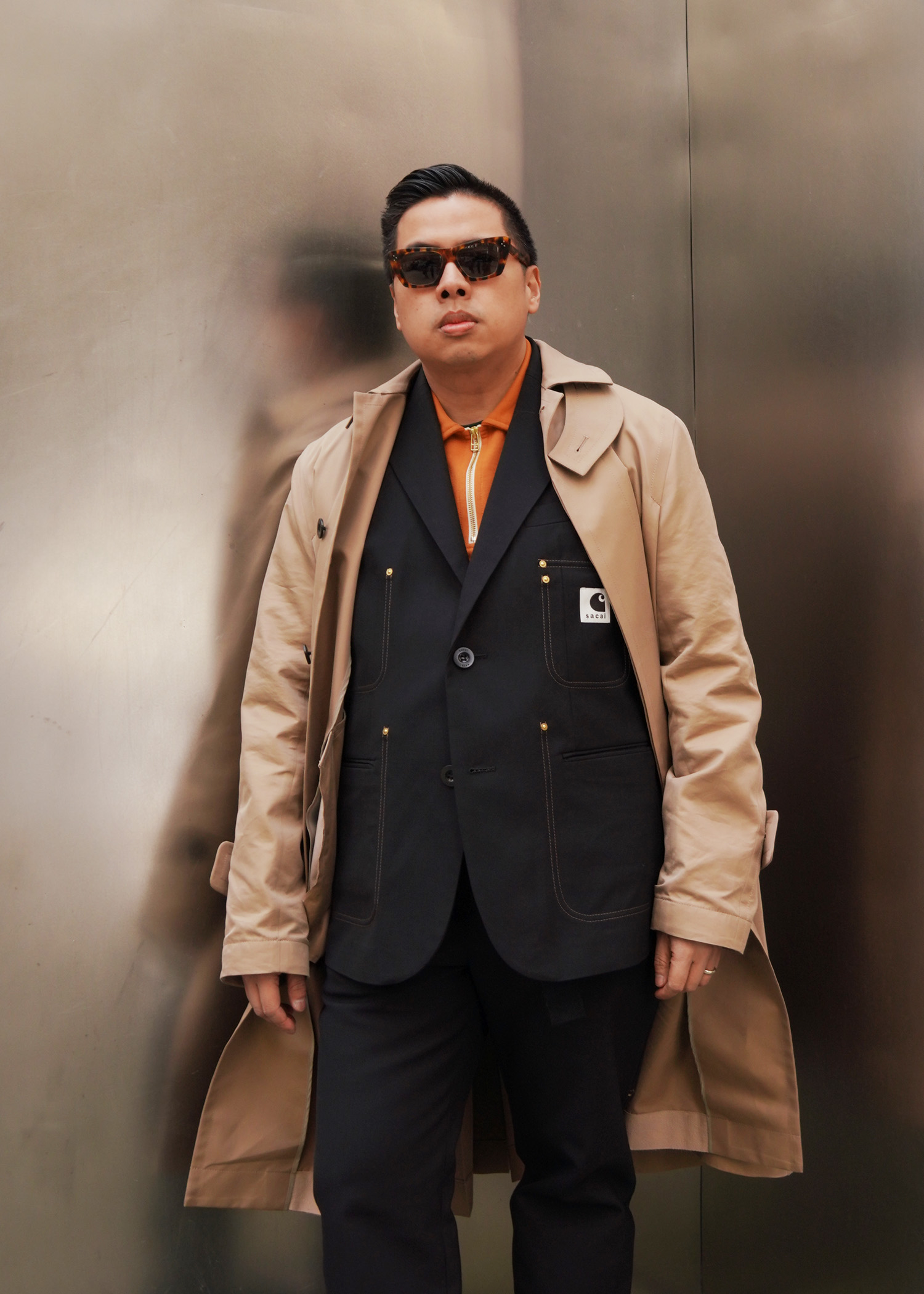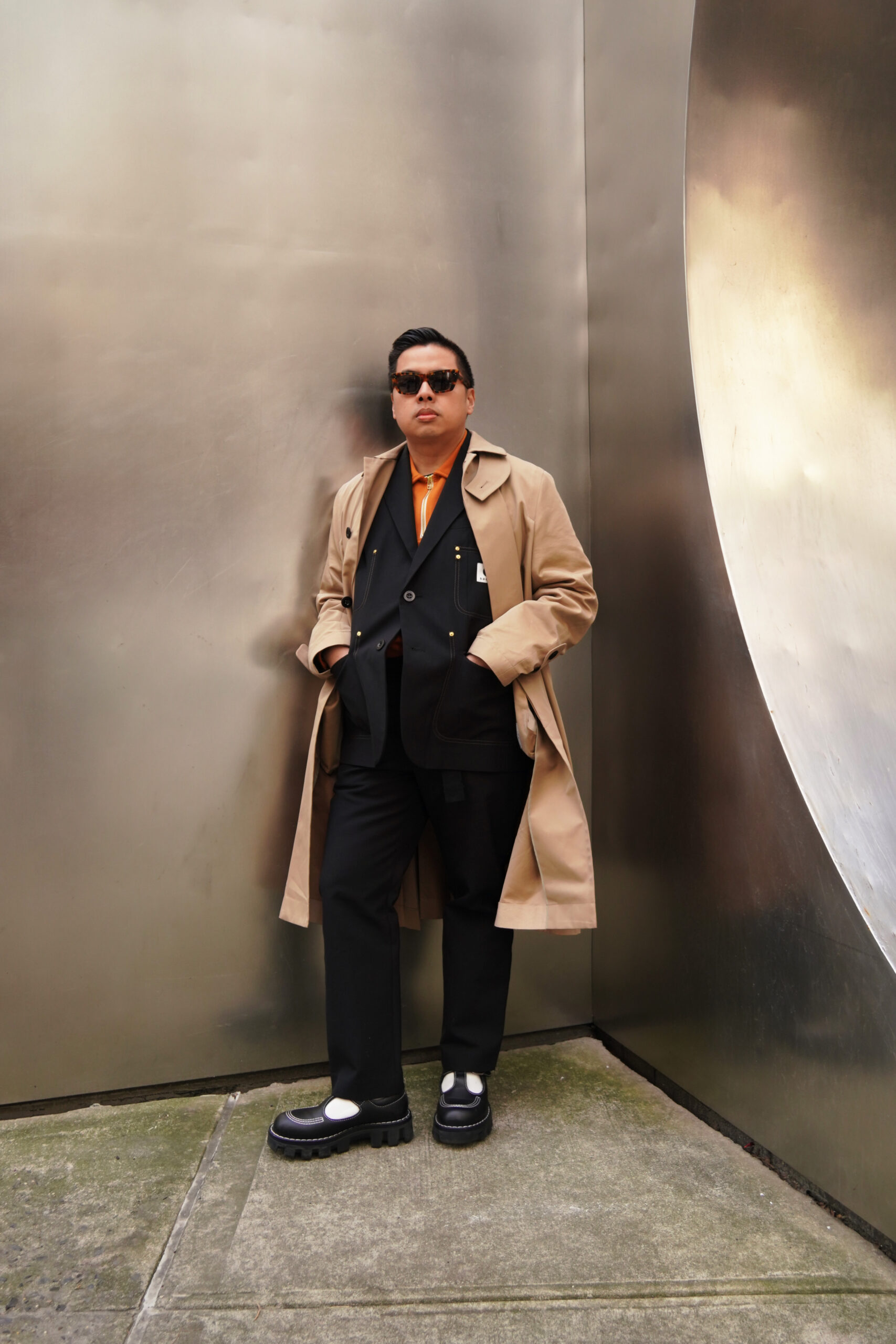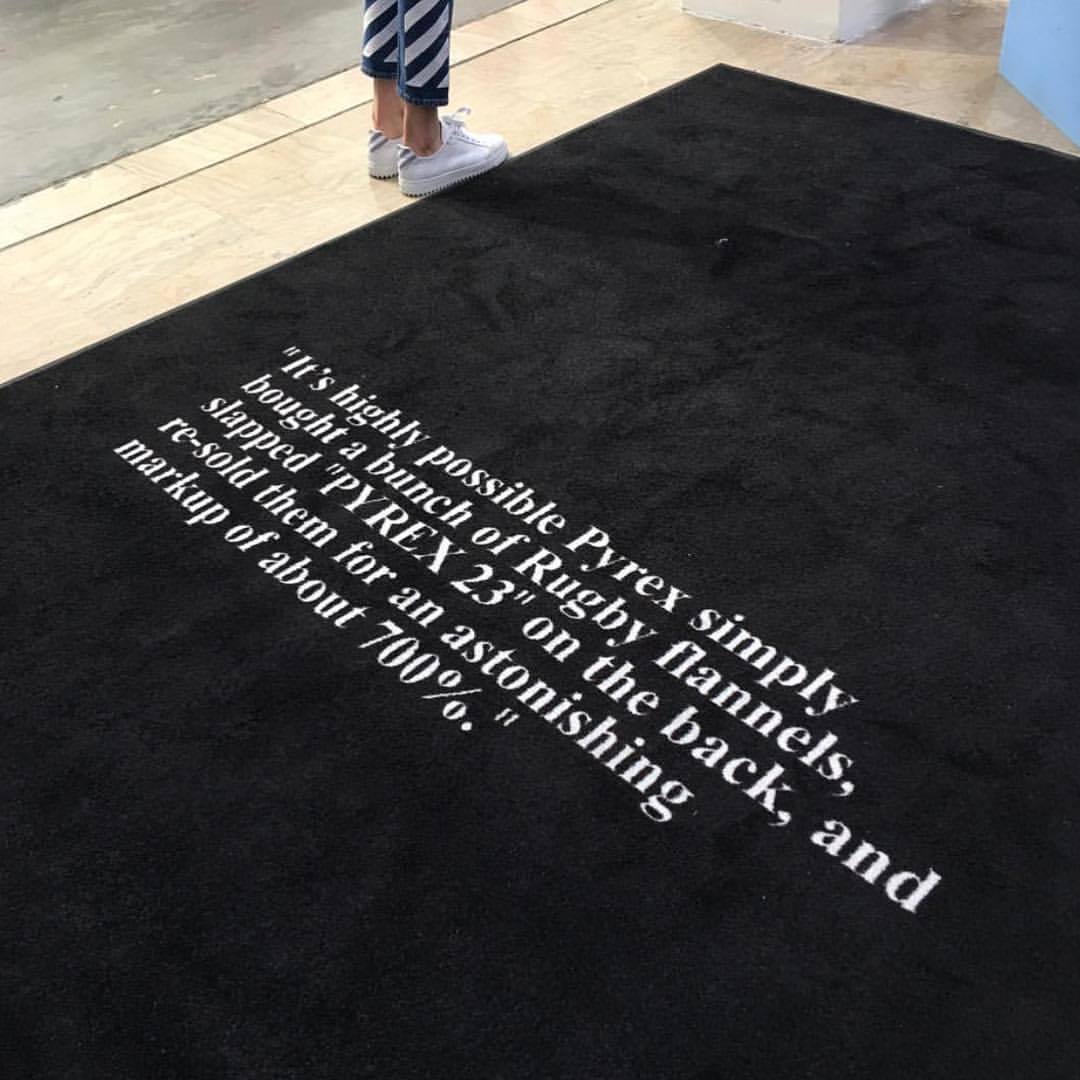
当前位置:NN777 - NN777 Casino - NN777 official website > NN777 official website >

Updated:2024-10-25 03:31 Views:204
Jian de Leon shares insights into the intersection between media and fashion and reflects on how style is cultivated by communities
Sitting in a cafe in the financial district in New York, Jian de Leon wears cult fashion labels sacai, Merz b. Schwanen, and calf leather Louis Vuitton shoes. He has just returned from his wedding in Manila to his wife Janice Szeto, who works in brand strategy for Uniqlo, New York.
De Leon traces his early roots in the Philippines, recounting how his family moved to Northern Virginia in the US when he was just four years old. In 2011, he moved to New York City where he worked freelance for Complex magazine while juggling a day job in the Department of Defense in Washington D.C.
After a few years of writing about menswear, fashion, and lifestyle on the side, de Leon began to work for Complex full-time. After Complex, he had a stint as a style writer for GQ, then returned to Complex to become the deputy editor.
“It was a really interesting time to be there. A lot of the friends that I had met there went on to do other projects. I worked with Sean Evans, who does the ‘Hot Ones’ show. There was Emily Oberg who we brought on to do on-camera talent. She did the brand Sporty and Rich. There were a lot of really creative people in the building who have gone on to do even more amazing things since then.”
 Photo by Miko Tiu Laurel
Photo by Miko Tiu Laurel
After Complex, de Leon worked for trend forecasting agency WGSN as the senior menswear editor. He then became the editorial director at Highsnobiety for almost four years. At present, de Leon is the director of men’s fashion at Nordstrom, one of the leading fashion luxury retailers in the US.
With a seamless career trajectory from media to management, de Leon has cultivated his authority on streetwear, particularly, staying ahead of the curve in an industry where trends are everything. “I stay outside. I visit new stores when they open. I go to art galleries when I can. It’s about being out there, and staying curious,” he says.
Together with his partner Noah Thomas, de Leon runs the podcast Muleboyz, dubbed on their IG bio “The World’s First Mule Account” giving credit to the niche, comfy shoe, and its elevated forms.
View this post on Instagram
With a postmodern flair, de Leon seems to challenge styles, ideas, and materials, taking a style stance informed by years of work in fashion journalism. As a respected purveyor of style in media and retail, de Leon can be considered something of a “fashion intellectual,” with an aesthetic sensibility that can accurately diagnose contemporary culture.
In conversation with Lifestyle.INQ, the New York-based fashion authority shares the trajectory of his career in the editorial and fashion worlds, giving insights into the creative community in New York, and his current role at Nordstrom.
Have you always wanted to pursue a career in media and fashion?
My career is things that I didn’t know I could get paid for, and that I found out I could get paid to do. I didn’t grow up wanting to be a fashion writer or lifestyle journalist. It just ended up working out that way. I majored in English when I was in college. So writing and communication have always just been a way for me to express myself and tell stories that I was interested in—and doing it in a way that I felt was authentic to the subjects I was covering. I always thought of myself as someone who was embedded in culture, fashion, and lifestyle, so when the time came to tell those stories, it was coming from the point of view of someone who was living that lifestyle and could do it from a real perspective.
Are you still writing in your current role? Maybe with your podcast projects?
I do oversee some copy, but I do have the podcast that I do with my partner, Noah Thomas, for the Muleboyz account. And then there’s the podcast called Blamo with my friend Jeremy Kirkland. We have the monthly podcast behind the paywall of the JJJ show with our other friend, Jon Moy whose name also begins with a J.
Noah and I started Muleboyz when we were with Highsnobiety and we had a podcast there called The Dropcast. Only recently we started to want to get back into starting our own podcast. So our producer Sonia Manalili is also Filipino and actually worked with us at HiSnob. We’ve been reporting every couple of weeks and are starting to get to a rhythm for that. It’s just about fashion, culture, sneakers, streetwear—things that we’re into. It’s a fun way to debate where we think everything’s going and the latest and greatest of whatever we’ve seen the past couple of weeks.
We’ve done some collaborations. We did one more recently with easymoc that’s launching soon. We had a really cool collaboration with 3sixteen. We also had a Lusso Cloud mule that was received well. And then we’ve done several projects with Birkenstock that we launched at Nordstrom.
 Photo by Miko Tiu Laurel
Photo by Miko Tiu Laurel
How do you balance all of these different projects besides your day job? Does it intersect?
I think it all intersects. I’m very fortunate that my career is a natural reflection of what I do normally. It all blends together. But it also inspires the other things that I’m doing. It’s a very modern way of working.
I’m super inspired by people like the late Virgil Abloh, who I worked with at Complex for a little bit. I wrote one of the first articles about him for the Business of Fashion years ago. When he was still alive, we wanted to do a project with him, one of the first projects that I wanted to undertake at Nordstrom. It came to fruition almost two years ago. We were able to partner with Virgil Abloh Securities, which is part of an ongoing initiative by his wife, Shannon, and some of the other partners that he worked with to keep his creative spirit alive. We partnered with the Brooklyn Museum, which had an exhibit at the time. It was a nice full-circle moment as well.
READ MORE: At Off-White F/W 2022, we all just live in Virgil Abloh’s universe
It’s also funny because I had written an article about his Off-White or Pyrex line. There was a quote that I had written about these old polo rugby flannels that he had found and screen-printed “Pyrex 23” on the back of them, and then I think he sold them for a markup of around 700 percent.
Then that quote ended up on a rug made by the artist, Jim Joe, which was part of the first Off-White showroom. And then it became part of the traveling “Figures of Speech” exhibit. He actually sent me one of the rugs, which is in my apartment. It’s probably the best piece of art that I have.
 Rug designed by JIM JOE 16 in the Off-White™ showroom. Photo from Virgil Abloh tumblr.
Rug designed by JIM JOE 16 in the Off-White™ showroom. Photo from Virgil Abloh tumblr.
There’s so much collaboration, connection, and community in your work. How would you say the community in New York is now?
I feel like these communities and tribes are generational. I wouldn’t be where I am today if I didn’t have the friends that I came up with, to keep me abreast of opportunities. And if I wasn’t doing the same for them, too.
With the people who have known you from the beginning, you always want to be able to support each other. There’s a new generation that happens with each new year in New York.
There’s the Been Trill crew with Matthew Williams, Heron Preston, and Virgil [Abloh]. Before that, there was the International Stüssy Tribe, and that sort of ’90s streetwear scene pioneered by Union, Supreme, Stüssy—the whole downtown shopping scene. That is another generation that preceded me. I feel like creativity in New York is characterized by those different kinds of groups coming together collectively, leading part of the conversation and at the same time, inspiring the new guard to do their own thing and make it their own.
Right now it’s Menswear Tiktokers who know each other.
I have to say ‘Mens Tiktokers’ sounds so uninspired after everything you’ve just said. Is there another creative group in this generation coming up that you would recommend us to look out for?
*laughs* I’m really a fan of all of the up-and-coming photographers. I feel like there are generations in fashion in particular that are defined by certain street style photographers. For me, it was Tommy Ton. Then now you have people like Tyler Joe, Martin Romero, and this new crowd of image makers that are capturing celebrities, great outfits, and literally putting a lens to style around the world.
Would say this connection of community and trends applies to the Philippines as well?
Yes. I’ve met the Fortune crew, and I met Carl Jan Cruz when he was in New York a long time ago. I visited his new studio in Taguig recently. There’s a rich Filipino creative community and it’s a small world. If you meet one person, that’s your conduit of meeting other people.
I think knowing people like Michael Concepcion, and Jappy Gonzalez, who are the retail pioneers bringing forward-thinking brands to the Philippines, really puts an interesting perspective on it, too. Even stores like Signet have an interesting point of view in American heritage and Japanese brands. Even sneaker stores, because the Philippines is such a basketball country.
READ MORE: Carl Jan Cruz’s conscious acts of creation
 Photo by Miko Tiu Laurel
Photo by Miko Tiu Laurel
Could you give me an overview of what you’re doing at Nordstrom now?
I’ve been the men’s fashion director at Nordstrom since 2020. I joined during COVID-19, which was a very challenging time for retail. I work across all aspects of men’s business, different buying teams, and merge collectors. And I just help oversee how we tell stories about what brands and trends we want to stand behind for the business. I’ve helped introduce several brands to Nordstrom. And I’ve gotten to work with our amazing special projects team on everything from concept stores to recent projects.
We recently launched a takeover for Paul Smith in our men’s store taking over our Clubhouse area. We’ve done amazing projects with Thom Browne. It’s super fun and there’s never a typical day.
There was a definite transition from media to retail. When I left Highsnobiety, we were becoming more of a retailer in the brand. We started carrying collaborative products and I worked with brands like Noah, Pleasures, and Braindead. A lot of retailers were leaning into how to become better storytellers—everyone from Net-a-porter to stores like Bergdorf Goodman and Bloomingdale’s. It’s a natural trajectory—a lot of contemporaries with a similar title to me also came from the media. It’s about having that eye for curation and knack for storytelling and applying that to the lens of retail.
***
By building a career with close friends who have now established their names in the industry, de Leon’s trajectory makes me think of the cult of creatives in Patti Smith’s memoir “Just Kids,” especially as he cites Virgil Abloh in the ’90s, or notes the current success of his past colleagues from Complex and High Snobiety.
This history of style-setters also reminds me of Susan Sontag’s essay “On Style” in “Against Interpretation,” where she writes, “Were it not for departures from, or experimentation with, previous artistic norms… We could never recognize the profile of a new style. Still further: the very notion of ‘style’ needs to be approached historically.”
Through an insider look into the New York tastemakers and their early days, de Leon underscores how style stems from the people telling us to get out there, reminding us that fashion and streetwear are no longer confined to exclusivity and the elite but by a community that has worked long and hard to get where they are today.
Photography by Miko Tiu Laurelfunny lions ph, assisted by Trinity Yeung.

Powered by NN777 - NN777 Casino - NN777 official website @2013-2022 RSS Map HTML Map